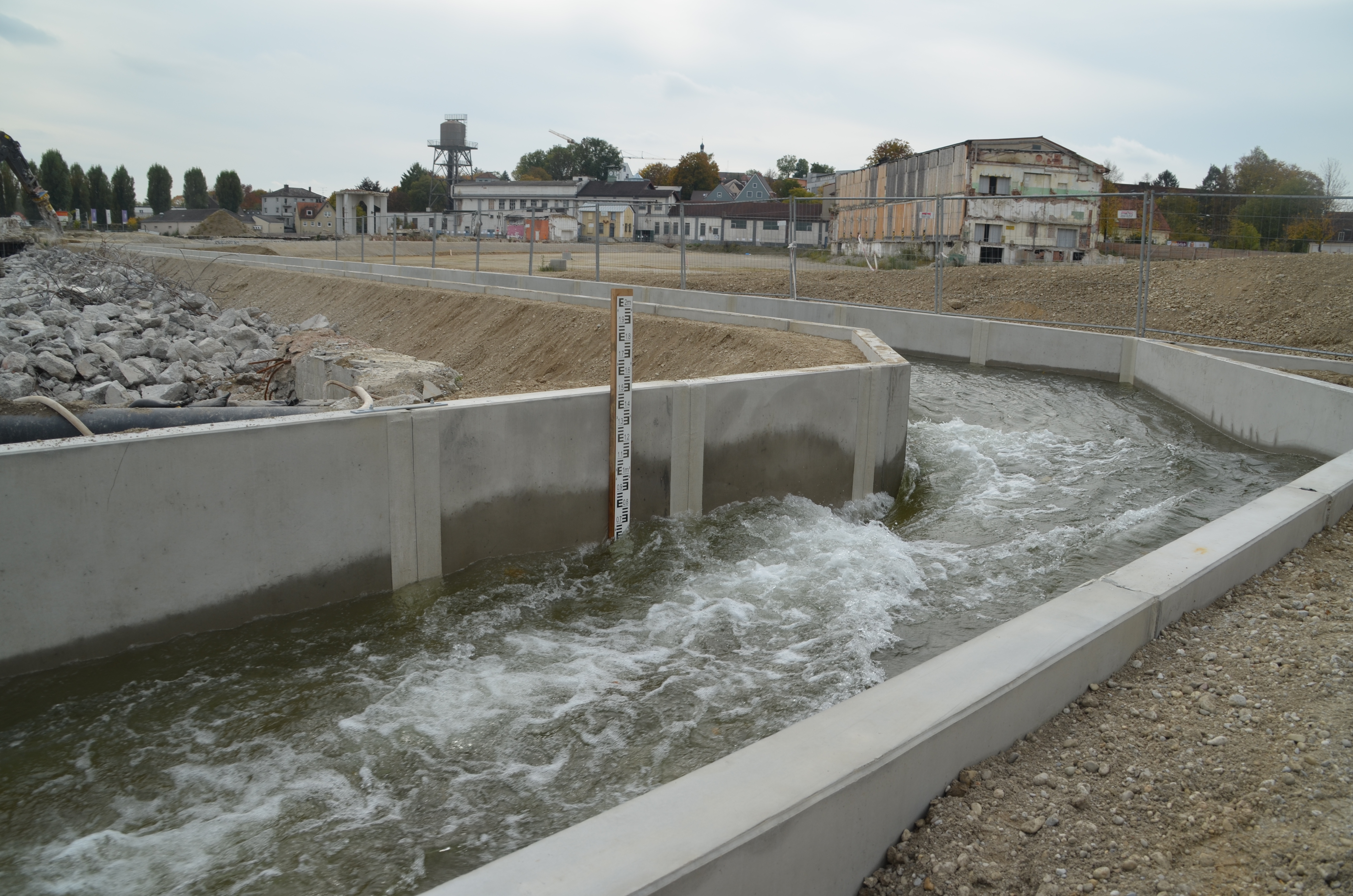The Mühlbach relocation. A major Bavarian project reaches milestone.
Isaria successfully transfers the Mühlbach stream in the future Dachau Mühlbach district to the newly created temporary structure.
Dachau, October 18, 2022
The Mühlbach flows swiftly over the site of the former MD paper mill in Dachau. As if nothing had happened. Yet everything is new. The streambed of the watercourse is a newly created provisional structure made of large stones and concrete U-sections that stretches over 600 meters across the site. Isaria München Projektentwicklungs GmbH, which is realizing the project for Deutsche Wohnen, had the provisional structure built over the past year and a half so that the old course of the river could be rehabilitated and brought out of the subsoil into the light of day.
New function of the future Mühlbach
The Mühlbach is a branch of the Amper River and ran along the site under the industrial site of the paper mill for almost 100 years until it flowed back into the Amper River. The MD paper mill used the Mühlbach for energy generation and paper production. For the new quarter, to which the Mühlbach lends its name, the stream is to be renaturalized and made accessible as an adventure area. It is one of the most impressive renaturation projects in Bavaria and a significant quality gain for the city of Dachau. In accordance with the principles of the sponge city, the watercourse is also to assume an ecological function in the new Mühlbach quarter. By providing an above-ground evaporation area and fanning out the course of the stream with a new, additional connecting channel to the Amper River across the large neighborhood park, the Mühlbach will help regulate the microclimate of the new district. With the relocation of the Mühlbach to its new temporary home, a first significant milestone has been reached. Numerous preparatory measures were necessary for this.
The steps taken so far in the Mühlbach relocation project
“The Mühlbach project that we are currently implementing in Dachau is an ambitious undertaking. We are implementing it in close coordination with the Water Management Office, the District Office and specialized planning offices. To ensure that the rehabilitation of the Mühlbach and the subsequent renaturation succeed, the individual steps must be approached with caution and ecological sensitivity. We are looking forward to the implementation of a lifelike Mühlbach in the new quarter,” says David Christmann, management spokesman at Isaria.
In order to protect the microcosm in the Mühlbach and to be able to maintain it in the new temporary structure, the water level of the watercourse had to be gradually lowered. Only when the water level was low could the individual sections of the stream be searched by experts for various species of mussels and the fish then fished out and reintroduced at another location. To ensure that the fish living in the Mühlbach had sufficient areas to retreat to during the low water, four water barriers – distributed along the course of the stream – were installed using sandbags weighing up to two tons. A truck-mounted crane balanced between 35 and 40 barriers per water barrier in the millstream. Narrow gaps were filled by hand with countless small sandbags.
Fishing of the millstream on the project site revealed an impressive diversity of fish species. The MD Amperfischer transported about 250 kilograms of fish to the new bank, where they were reintroduced alive. Lady redfish, ruffe, hazel, nase, tailor, barbel are fish that are on the red list or listed in the species protection program. In addition, five-kilogram pikeperch, eels, catfish, wild carp, brax, perch, bleak, asp and many other fish species were relocated. After the fish were relocated, the Mühlbach could be gradually discharged into its new temporary habitat. Thus, the Mühlbach renaturation project reached its first major milestone.
The next work steps
In the following weeks, the second major phase of the restoration will begin: the industrial superstructure of the Mühlbach will be demolished and recycled so that the old stream bed can then be restored. The demolition work will be implemented as quickly as possible so that the last industrial contaminated sites can be removed.


